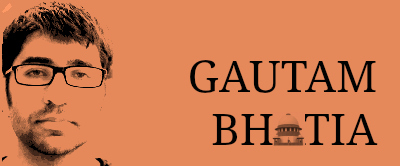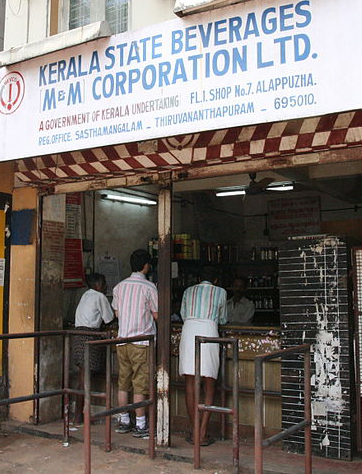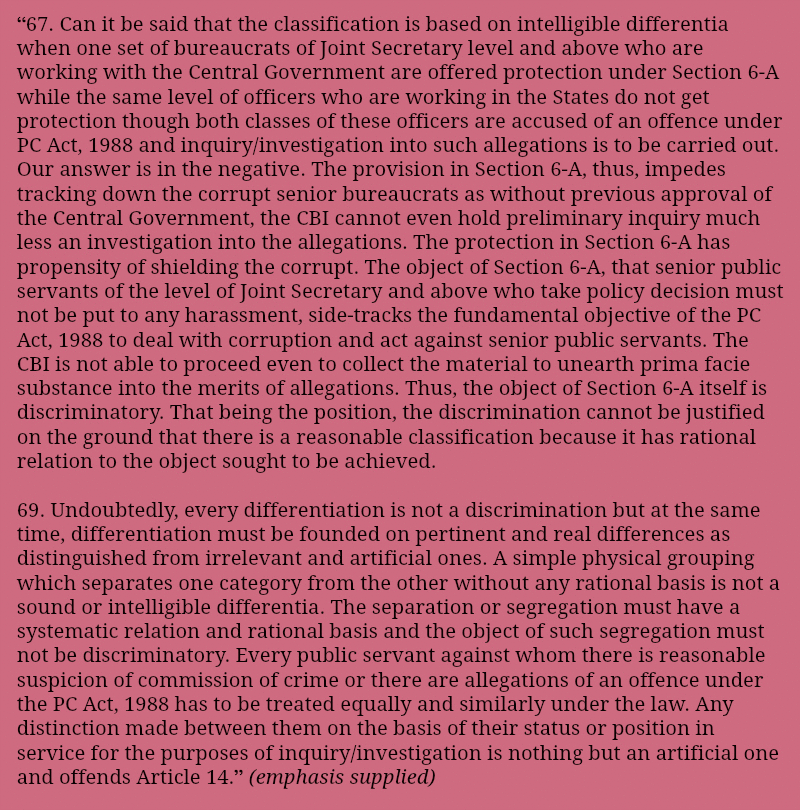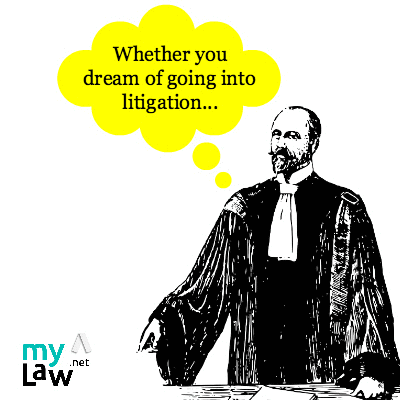 Last week, it was reported that Kerala’s government is planning to impose prohibition in the state. The relationship between alcohol, crime, and public disorder (and the government’s attempts to regulate it) has enjoyed a troubled history throughout the world. For example, the adverse impact of alcohol upon society so troubled American lawmakers at the turn of the twentieth century, that they actually entrenched prohibition into their constitution, via an amendment, in 1920. The amendment proved impossible to enforce, contributed to a thriving black market and to organised crime, and was repealed thirteen years later. In light of similar experiences in India, the Kerala government’s decision has been criticised as being short-sighted and counter-productive. Should the decision be ultimately enforced by legislation, it also raises constitutional issues under Part III of the Constitution of India.
Last week, it was reported that Kerala’s government is planning to impose prohibition in the state. The relationship between alcohol, crime, and public disorder (and the government’s attempts to regulate it) has enjoyed a troubled history throughout the world. For example, the adverse impact of alcohol upon society so troubled American lawmakers at the turn of the twentieth century, that they actually entrenched prohibition into their constitution, via an amendment, in 1920. The amendment proved impossible to enforce, contributed to a thriving black market and to organised crime, and was repealed thirteen years later. In light of similar experiences in India, the Kerala government’s decision has been criticised as being short-sighted and counter-productive. Should the decision be ultimately enforced by legislation, it also raises constitutional issues under Part III of the Constitution of India.
The Article 19(1)(g) issue
Article 19(1)(g) of the Constitution guarantees to all citizens the freedom to “practice and profession, or carry on any occupation, trade or business.” Article 19(6) permits the government to impose, by law, reasonable restrictions upon that freedom, in the interests of the general public. To these provisions, we must add a third: Article 47 of the Constitution, which is part of the Directive Principles of State Policy. Article 47 requires the State to “endeavour to bring about prohibition of the use except for medicinal purposes of intoxicating drinks and of drugs which are injurious to health.”
The question of what constitutes a “reasonable restriction” upon an Article 19(1) fundamental right, for the purposes of Articles 19(2) to 19(6), was answered by the Supreme Court as early as 1952, in State of Madras v. V.G. Row. The Court outlined a classic proportionality enquiry, holding that in adjudicating reasonableness, “the nature of the right alleged to have been infringed, the underlying purpose of the restriction imposed, the extent and urgency of the evil sought to be remedied thereby, the disproportion of the imposition, the prevailing conditions at the time, should all enter into the judicial verdict.” While V.G. Row emphasised that reasonableness must be judged on a case-to-case basis, keeping in mind the variable background context, Supreme Court cases have established one rule of thumb for judging reasonableness-as-proportionality: legislation that is aimed at advancing one of the Directive Principles of State Policy carries a strong presumption of reasonableness, as well clearly being in the public interest. For instance, in MRF Ltd. v. Inspector, Kerala Govt., the question was whether a Kerala legislation that increased the number compulsory paid holidays that industrial establishments had to allow their employees, violated Article 19(1)(g). The Court adverted to V.G. Row’s proportionality test, and then invoked Article 43, a Directive Principle, that mandated the State to ensure a decent standard of life for workers. On the basis of Article 43, it held the legislation to be a reasonable restriction upon Article 19(1)(g), and therefore saved by Article 19(6).

More directly on point is the Supreme Court’s 2005 decision, in State of Gujarat v. Mirzapur Moti Kursehi Kassab Jamat, where a statute that almost completely prohibited cow slaughter was held valid for the most part, notwithstanding Article 19(6). The Court held that “a restriction placed on any Fundamental Right, aimed at securing Directive Principles will be held as reasonable and hence intra vires [as long as] it does not run in clear conflict with the fundamental right.” In light of Article 48, which directed the State to take steps to prohibit the slaughter of cows in order to preserve and improve breeds, the Court upheld the law, despite its deleterious affect upon 19(1)(g) rights. The Court did not, in this case, explain what it meant by a “clear conflict with the fundamental right”, which would presumably render even the DPSP-enforcing law unreasonable. Nonetheless, it is safe to assume that if Article 48 – following from V.G. Row – can justify a near-total ban on cow slaughter, then by the same logic, Article 47 can justify a near-total ban on the sale of alcohol. Consequently, in light of the Supreme Court’s jurisprudence, and the state of the law, a 19(1)(g) challenge to prohibition is unlikely to succeed.
The Article 14 issue
While the proposed prohibition law will perhaps survive Article 19 scrutiny, there is also the equality clause – Article 14 – to consider. As is well-known, the Court has evolved two tests to determine when Article 14 is violated. The older test requires an impugned classification to be based on an intelligible differentia, and to bear a rational nexus with the State purpose. The newer test simply prohibits ‘arbitrariness’. While ‘arbitrariness’ has been the dominant test over the last two decades, in recent cases (such as Centre for Public Interest Litigation v. Union of India), the Court has explicitly adopted the classification test.
While some of the case discussed above have also held that a legislation designed to advance the Directive Principles cannot, by virtue of that very fact, be arbitrary, the position becomes considerably more difficult if we understand Article 14 as requiring reasonable classification. This is because the Kerala government plans to impose prohibition while at the same time allowing 5-Star Hotels to continue serving alcohol. Here, the (potential) legislation would create a classification between 5-Star Hotels and all other establishments that ordinarily serve alcohol, with no discernible nexus with the State purpose (presumably, to preserve public health and public order).
Furthermore, there is direct precedent on the point. In 2005, the government of Maharashtra amended the Bombay Police Act, 1951 and prohibited “a performance of dance, of any kind or type, in any eating house, permit room or beer bar.” In the very next section, however, it created a specific exemption, inter alia, for three-star hotels and above. The Court invoked the classification test, and struck down the  amendments to the Act. The government tried to defend the classification on the basis of the “type of crowd” that visited the regulated establishments (presumably, being more susceptible to moral deprivation by watching dance), an argument to which the Court gave extremely short shrift, holding merely that: “in our opinion, all the aforesaid reasons are neither supported by any empirical data nor common sense. In fact, they would be within the realm of “myth” based on stereotype images.” The Court went on to hold that “a distinction, the foundation of which is classes of the establishments and classes/kind of persons, who frequent the establishment and those who own the establishments can not be supported under the constitutional philosophy so clearly stated in the Preamble of the Constitution of India and the individual Articles prohibiting discrimination on the basis of caste, colour, creed, religion or gender.
amendments to the Act. The government tried to defend the classification on the basis of the “type of crowd” that visited the regulated establishments (presumably, being more susceptible to moral deprivation by watching dance), an argument to which the Court gave extremely short shrift, holding merely that: “in our opinion, all the aforesaid reasons are neither supported by any empirical data nor common sense. In fact, they would be within the realm of “myth” based on stereotype images.” The Court went on to hold that “a distinction, the foundation of which is classes of the establishments and classes/kind of persons, who frequent the establishment and those who own the establishments can not be supported under the constitutional philosophy so clearly stated in the Preamble of the Constitution of India and the individual Articles prohibiting discrimination on the basis of caste, colour, creed, religion or gender.
It would therefore seem to be beyond cavil that the basis of exempting 5-Star hotels from prohibition cannot withstand Article 14 scrutiny. Ironically, of course, the Kerala government could get around the Article 14 problem simply by prohibiting the sale of alcohol entirely, 5-Star hotels included. Whether it will do that is something that remains to be seen.
(Gautam Bhatia blogs at Indian Constitutional Law and Philosophy.)







